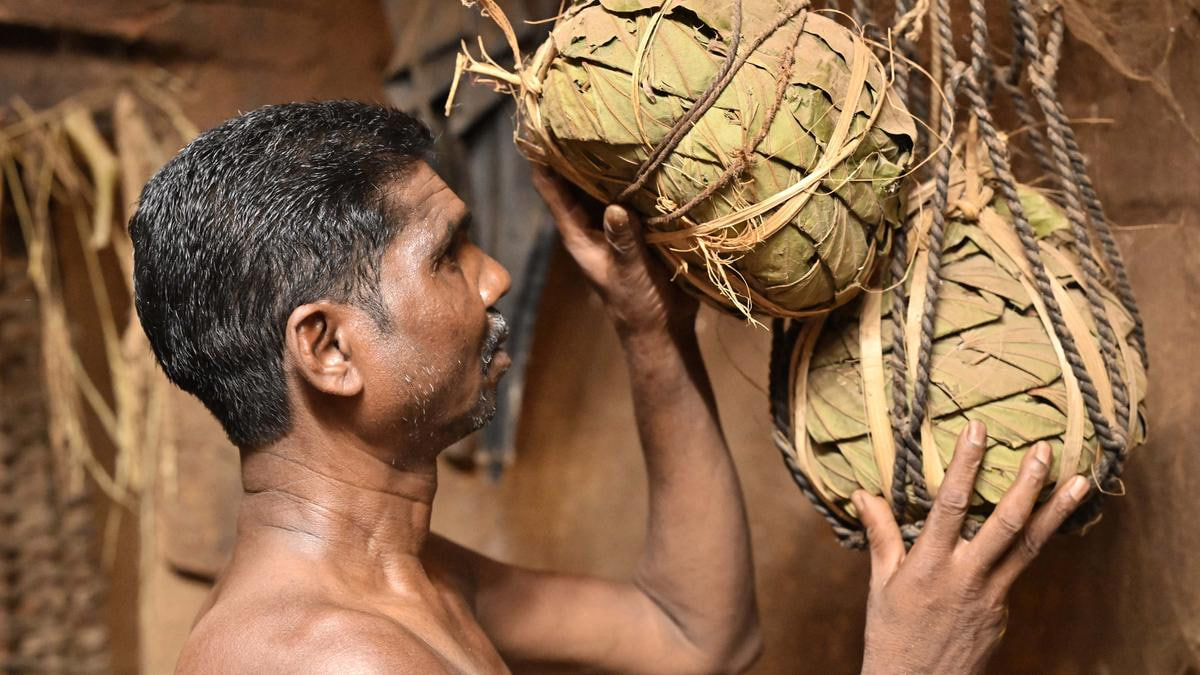Description

Copyright infringement not intended
Picture Courtesy: https://www.thehindu.com/news/national/andhra-pradesh/muria-tribes-own-eco-friendly-foolproof-seed-preservation-method/article68178897.ece#
Context: The Muria tribe in Godavari Valley preserves seeds using the eco-friendly 'deda' method, handed down by ancestors from Chhattisgarh, ensuring crop sustainability.
Muria Tribes
- The Muria tribe, an indigenous Adivasi community in the Bastar district of Chhattisgarh, is deeply rooted in their cultural traditions and social structure.
- Many Muria tribes migrated from Chhattisgarh to the Godavari Valley in Andhra Pradesh due to conflicts between left-wing extremists and central forces prior to 2012.
- The Muria rely on forest produce, fruits, vegetables, rice, and traditional luxury foods. Local liquor, such as Mahuva and Selfi, holds significance in social and ritual gatherings.
- Muria youths participate in mixed-sex dormitories called "ghotul," where sexual activities are encouraged. They marry late and typically do not engage in dowry practices.
- They follow traditional folk practices, worshipping nature and village deities, akin to Sarnaism.
- Muria families engage in small-scale farming, primarily for food security. They cultivate pulses and maize on small holdings developed over the years in their settlements.
- Murias rarely sell their farm produce commercially, preferring to grow crops for their own consumption rather than engaging in large-scale commercial cultivation.
Deda Method
- The Muria tribes follow a traditional seed preservation method called "deda," which they continue to practice despite displacement from their native regions in Chhattisgarh.
- This method involves preserving seeds in leaves and packaging them almost airtight, resembling boulders from a distance.
- The seeds are woven with Siali leaves, locally known as "addakulu," to create a deda.
- Multi-Layer Protection: The deda has three layers. The first layer contains wood ash spread inside Siali leaves, followed by lemon leaves forming a casing over the ash. The seeds are then preserved inside the casing and sealed. This method ensures protection from pests and worms, allowing the stored seeds to remain viable for up to five years.
- Preservation of Various Pulses: Muria tribes preserve seeds of pulses such as green gram, red gram, black gram, and beans using the deda method.

Conclusion
- The deda method represents an eco-friendly and time-tested approach to seed preservation that allows the Muria tribes to maintain their agricultural heritage and ensure food security in their communities despite facing displacement.
Source:
The Hindu
Wikipedia
|
PRACTICE QUESTION
Q. What is the Deda method frequently seen in the news related to?
A) Traditional dance forms
B) Seed preservation
C) Water conservation
D) Herbal medicine
Answer: B
|
















